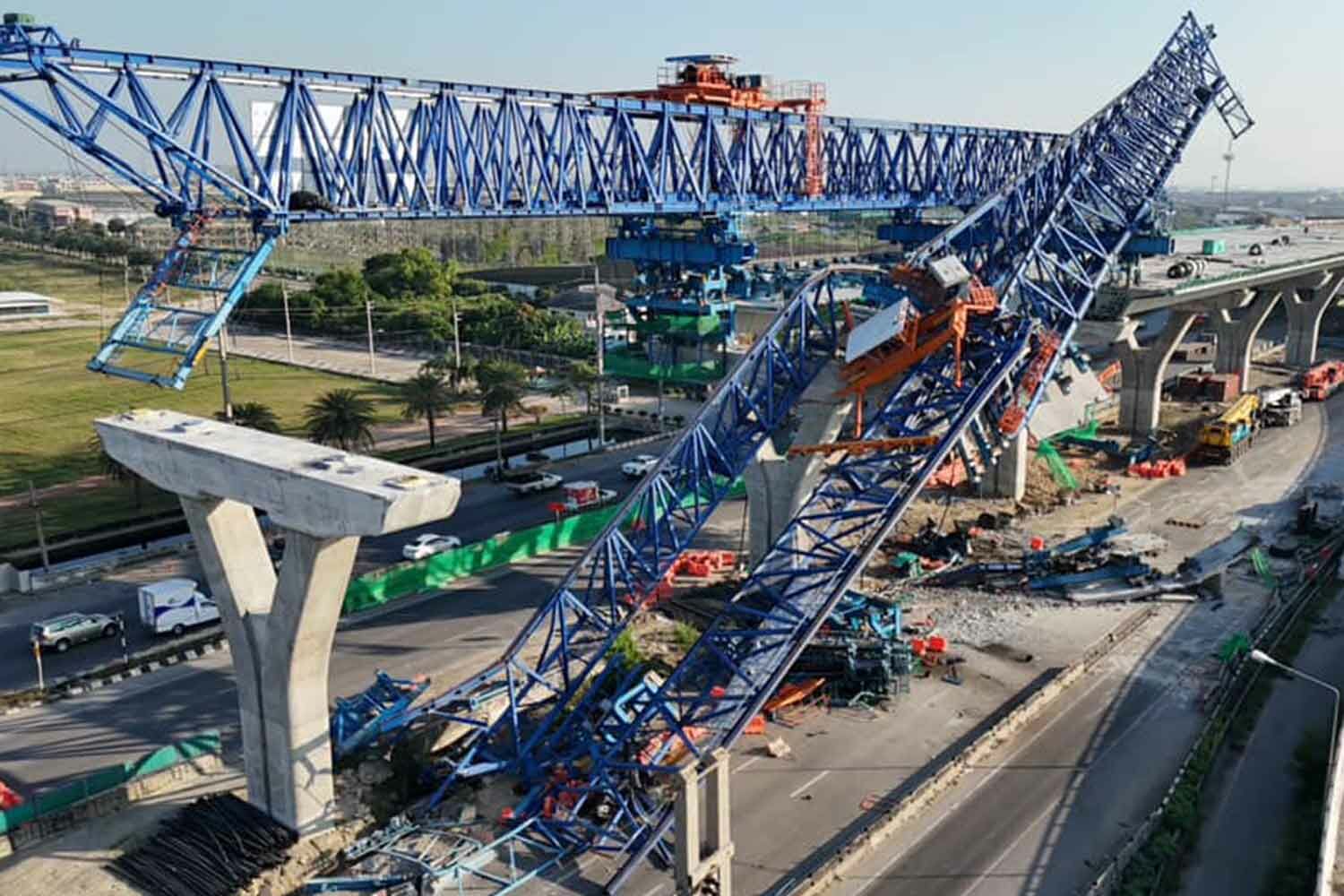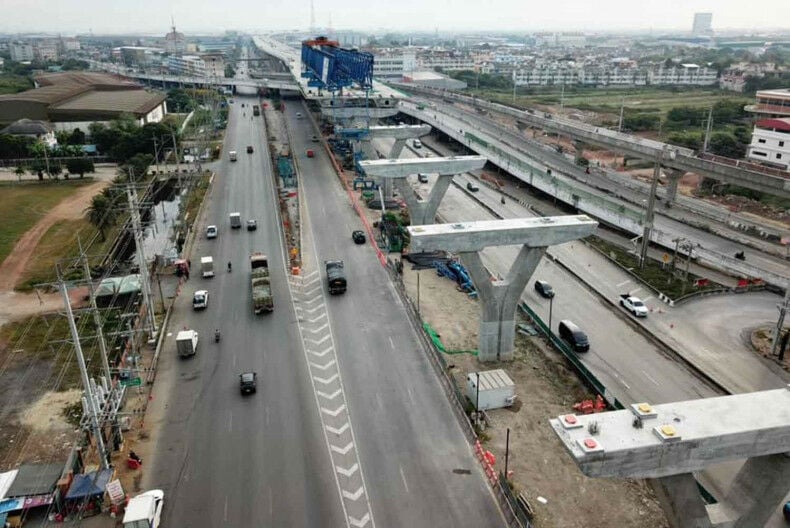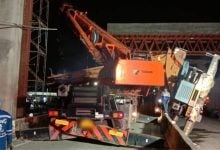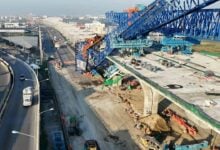Rama II Road reopens after crane accident caused fatalities (video)

Commuters can breathe a sigh of relief as traffic resumes on Rama II Road following a harrowing crane accident that claimed six lives and injured nine, leaving a trail of disruption in its wake.
The nightmare began in the small hours of November 29 when a crane buckled under the weight of a concrete beam at the Ekkachai-Ban Phaeo Intercity Motorway 82 (M82) site in Samut Sakhon. The tragic scene unfolded at 4.13 am, blocking the outbound lanes in the Khok Krabue sub-district.
Now, in a display of swift action, both inbound and outbound lanes are back in business, confirms Apirat Chaiwongnoi, Director General of the Department of Highways.
Teams from multiple agencies joined forces to clear the chaos, dismantle the wreckage, and restore the road surface in a remarkable 14-day blitz. Victims’ families have received compensation surpassing 5.4 million baht, providing some solace amidst the grief.
The Department of Highways thanked all commuters for their patience during the disruption and extended apologies for any inconvenience caused.
Stretching 84 kilometres, Rama II Road, or Highway No 35, cuts a vital path from Bangkok through Samut Sakhon and Samut Songkhram, before merging with Highway No 4 in Ratchaburi. Since 1973, this crucial artery has grown from six lanes to a whopping 14 lanes, with new expressways now taking shape overhead to ease congestion.

But this bustling route has a chequered history of accidents. Among the ongoing developments, slip-ups have led to fatalities and injuries, reported Bangkok Post.
In 2021, a tragic fall claimed a worker’s life, and in 2022, disasters included a deadly slab drop from a U-turn bridge and water crashing onto a car from a sagging tarpaulin. Just this year, December’s steel fall marked yet another grim episode, following a crane failure in January that killed one and injured another.
Professor Amorn Pimanmas, head of the Thailand Structural Engineers Association, shines a spotlight on the inherent dangers in constructing massive infrastructures, calling for a critical review of standards and protocols, especially where sliding steel trusses are involved.
“The crux of the problem lies in the ‘steel launching truss’ work, demanding a top-tier engineer’s oversight.”
For genuine change, Amorn advocates for legislation to govern construction with sliding steel truss systems, ensuring thorough training and licensing for all, from engineers to operators, said Amorn.
“In advanced nations like Japan, stringent laws ensure only qualified contractors tackle such projects.”
Meanwhile, the Transport Ministry’s probe into the catastrophic November 29 incident remains pending. Minister Suriya Jungrungreangkit has tasked departments with collaborating with the Finance Ministry’s Comptroller General’s Department to assess contractors rigorously.
A contractor’s notebook is set to be introduced, scoring performance and enforcing safety compliance with penalties, alongside possible bans from future state contracts for offenders.
Frequently Asked Questions
Here are some common questions asked about this news.
Why are sliding steel truss systems particularly risky in construction projects?
They require precise expertise and supervision; inadequacies can lead to structural failures and accidents.
How could enhanced safety measures impact future construction projects in Thailand?
Improved safety measures could reduce accidents, enhance worker safety, and increase public confidence in infrastructure projects.
What if Thailand implements stringent licensing for construction workers?
Licensing could ensure only qualified individuals handle complex tasks, potentially reducing accidents and improving project outcomes.
How does the ‘Contractor’s Notebook’ initiative aim to improve construction safety?
It assesses contractors’ safety performance, penalizing non-compliance, thus encouraging adherence to safety standards.
What lessons could Thailand learn from Japan regarding construction safety regulations?
Adopting Japan’s contractor registration laws could ensure only qualified professionals manage complex construction systems.
Latest Thailand News
Follow The Thaiger on Google News:


























